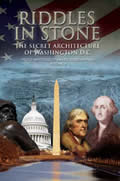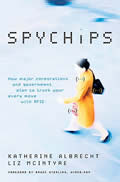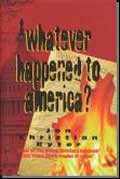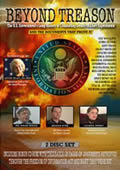Other
Ryter
Articles:
The Two Kerry's:
War Hero or
Traitor?
"Men in Black" The Cult of The Judges
WHOSE
FUDGIN' THE SAT SCORES?
By Jon Christian Ryter
August 29, 2007
NewsWithViews.com
The College Entrance Examination Board, commonly referred to as the College Board, was founded in 1900 to create "standards" for college admission. The initial Scholastic Achievement Test was published and submitted for use by United States high schools in 1901. The SAT was originally developed to create a uniform criteria for gauging the intellectual proficiency of high school graduates seeking admission into the nation's colleges and universities. In 1941, the name of the SAT was more accurately changed�at that time�to Scholastic Aptitude Test, reflecting the notion that the test was designed to evaluate the student's potential and thus, whether or not he or she would "fit" in a college and/or university. In the Clinton-era, the politically-correct 1990's, the name was once again changed because it was no longer considered polite to gauge anyone's intellect. The initials "SAT" now stood for Scholastic Assessment Test, but the PC police decided, in 1994, that was not fair either. The name simply became The SAT�with the acronym standing for nothing.
Which, it appears, may be what the SAT scores themselves represent as well. In a lawsuit filed by the National Center for Fair & Opening Testing�FairTest�the group argued in court that The College Board gave scores of students�about 4,400 of them�lower SAT scores because of what they described as an unusual technical problem that occurred when their computers scanned of the answer sheets. Out of approximately 495 thousand tests scored, a glitch affected only a handful. Strangely, the largest concentration of "errors," according to Chiara Coletti, vice president of The College Board, occurred on the liberal East Coast and liberal West Coast with the largest number of errors in New York and New Jersey.
The College Board, which announced the error early in 2006, agreed to refund the fee�$25 to $45�even though several of the 4,411 test takers were rejected by the colleges or universities they hoped to attend. Bruce Poch, vice president of admissions for Pomona College in California said, in his view, "...a refund of the test fee [will not] make up for the pain...and in this litigation-driven society, I wonder how long it will take for a class action suit to emerge." Not long. Within a matter of a few months, FairTest filed a class action lawsuit on behalf of the 4,400 students. The College Board quickly settled the action for nearly $3 million. Each student whose test results were erroneously reported with lower scores than they earned will have the option of receiving a check for $275 or the right to submit a claim for more severe damages if they can substantiate them.
Poch also wondered how many of the students who were rejected by the colleges to which they applied would have been accepted if their scores were reported accurately. Six applicants (students from New York, Connecticut, Massachusetts and Washington, DC) who were denied admission at Pomona were advised that their correct scores "...were being taken into account." New York University said that SAT scores for 300 students were incorrect, adding only that not all of them had applied for admission. NYU would not say how many, if any, of those students were rejected. The NYU spokesman merely said the university does not place a lot of importance on SATs in deciding who will be accepted by the university. NYU is a major affirmative action university even though the courts have ruled affirmative action admissions are now illegal.
Of the [4,411], Coletti noted, only 16 students had scores with errors in the 200 point range. None, she said, had errors over 400 points. The largest error group, she noted, was in the 80- to 100-point range. (Although Coletti makes the errors�even in the low ranges of 10 to 40�sound insignificant, it should be noted that colleges and universities which still practice affirmative action "scoring," award minority and economically-disadvantaged students a 20-point bonus for being a minority or for being economically disadvantaged�which can be up to one-fifth of the score they need in that set of SATs�and can be a deciding factor in whether or not the test taker will be admitted to that college or university. Take 80- to 100 points from a student and you have pretty much eliminated that student's preferred major college or university hopes. Take away 200 points or more and you've eliminated any chance the student has of being admitted to a state college�except, perhaps, the Internet universities which take�and graduate�anyone with the price of tuition.
Even before FairTest filed its class action on behalf of all of the 4,411 students against The College Board, St. Paul, Minnesota attorney T. Joseph Snodgrass filed a lawsuit on behalf of a St. Paul high school senior whose SAT was incorrectly scored. Snodgrass sued The College Board and Pearson Educational Measurement which is the nation's largest provider of SATs.
The student was one of more than 600 students whose SAT was underscored enough to keep him from securing a student berth in any ivy league college. A similar lawsuit, filed by a New York lawyer on behalf of a Dix Hills, New York high school student was also filed against The College Board on approximately the same day. Snodgrass noted that "...[a]ny type of high stakes test that impacts a life event like college, scholarships and financial aid has to be scored with 100% accuracy. There is no room for error in this type of situation."
Snodgrass' lawsuit sought unspecified damages and a refund of the test fee. In addition to seeking an order to elevate his client's SAT to the correct score, the St. Paul lawyer demanded that The College Board be forced to to lower hundreds of what appear to be minority student scores that were inflated�giving those students elevated SATs they did not earn. The College Board refused to recast the errors in the SATs that were inflated �raising the question (in this writer's mind) of whether the "errors" in the scoring were really errors or if, perhaps, they were an invisible attempt by a socially-just educational establishment to formulate an under-the-radar affirmative action program that could not be challenged as affirmative action in the courts.
There is clearly an educational funding-disparity between affluent middle class districts and those districts which are dominated by African American and Hispanic students. Public schools are primarily funded with local tax dollars with an financial boost from the State and the federal government. Wealthy school districts, with all of their politically-correct rhetoric, are reluctant to share their tax revenues with poor school districts and, as a result, the disparity continues to grow regardless of the depth of the social programs implemented by government to raise the poor out of poverty. The socialist educational bureaucracy believes the societal mechanism known as poverty comes not just from the historic spatial clustering of the poor in destitute neighborhoods but, even more, from the absence of public funding for colleges and universities that will allow minorities to learn their way out of poverty. Today's social engineers are convinced the answer lies in educating minorities out of poverty because the 1990 US census showed that only 12% of African Americans had a 4-year college degree while 25% of White America had them. The high school dropout rate for African Americans in 1973 was 22% compared to 13% for Caucasians. Using affirmative action as a societal tool, by 1990, the dropout rate for Blacks was 13%�down some 41% from 1973. (Data released by US Census Bureau in 1993.)
Nevertheless, the racial scoring gap between African American and Caucasian students that narrowed under affirmative action�and which was adroitly managed through the SATs with bonus points given to minorities and those construed to be economically disadvantaged�has ever so slowly widened since 2002 when the Supreme Court ruled in Gratz v The College Board that race could not be used as a factor in determining college admission. The action, filed by Jennifer Gratz and Patrick Hamacker against the University of Michigan in 1997 for the most part ended affirmative action. That, of course, also created the need to find a creative solution for the societal planners to help African Americans get into America's colleges and universities with lower SAT scores.
Is it a coincidence that the first SAT lawsuit for egregious scoring errors was filed against The College Board and Pearson Educational Measurement in 2002? In my opinion, no, it isn't. Snodgrass filed an identical action against Pearson for precisely the same SAT scoring transgressions. Only, in 2002, over 8,000 students received incorrect SAT scores. Snodgrass argued in his filing that Pearson took shortcuts in arriving at its scores. In both cases, Pearson and The College Board settled the lawsuits rather than go to court.
Is it because they didn't want their scoring methodology scrutinized too closely? And, why do the errors happen where they happen? If there's a computer glitch, why are the problems not universal�or at least uniformly spread throughout the country? One of the Pearson "experts" claims that the problem is caused by humidity on the paper scoring ballots. The "expert" claimed that humidity will expand a bone-dry piece of paper by as much as 1%�or, in case of the ballots, 1/10th of their length, width and thickness, causing the problem. Pearson clamed they solved the problem in 2002 by storing the scoring ballots in a controlled atmosphere. We can assume from the second challenged scoring incident that neither problem was caused by moisture since climate-controlled scoring ballots appear not to have caused the scoring dilemma. Although there is no evidence to support it since Pearson settles its challenges to scoring rather than allow an adversarial legal system to examine the methodology used in scoring�and whether or not the methodology is standardized enough that the human element�the helping hand�is eliminated from the scoring equation.
Changing the nature of the SAT test
Changes�a new written component�are being made on the SAT. Education experts believe the changes will lessen racial differences and reduce criticism from African American educators that the SATs are unfair. But, while Black educators believe the new writing element will help African American students raise their SAT scores, Black test takers�of whom only about 50% take English composition�think the new will widen the gap because they believe the writing skills of African Americans (as a group) are not as developed as those possessed by Caucasians. Skeptics of the new written segment insist that those who score the essays will be able to determine the race of the test taker by the characteristics of the vocabulary in the subject matter of the essay. Once defined, the skeptics believe, The College Board could, and likely would, favor the African American or other minority student with higher scores.
In 1976 The College Board published an analysis of the racial differences in he SAT scores. The average score of the African American test taker was about 20% below the average white score. By 1980 the disparity had shrunk to 17% and to 15% for 1988. While academicians believed the scoring gap would close up and disappear altogether, the opposite happened. The scoring gap plateaued in 1989 and slowly began to reverse itself. By 2005 the white test takers averaged 17% higher scores than black test takers.
The reason? At that time, income appeared to be a major factor. As affluence increased so did the SAT scores. However, the means averages between the ethnic groups is distinct. African Americans score lower than any other ethnic group in the United States�including those with Puerto Rican and Mexican backgrounds. Asian-Americans traditionally score an average of 229 points higher than African Americans. Alaskan natives and Native Americans, as a group, score 104 points higher than Black Americans.
Now educational experts believe the SAT gap is the result of the precollege courses taken by black and white students. In point of fact, they claim, it's due to the fact that 32% of the white students take trigonometry or calculus while only 14% of black students do. Sixty-seven percent of white students study composition. Only 50% of black students do. White students, by a margin of 87% to 75% for blacks studied American literature. Further, Caucasian students are far more likely than African American students to have studied the sciences.
|
Subscribe to the NewsWithViews Daily News Alerts! |
As
a result, 45 times as many white as black test takers scored 700 or
more on their math SATs and 39 times as many whites as blacks scoring
at least 700 on their verbal SATs. About 6% of all first-year students
at the nation's top 25 universities received their admission through
SAT affirmative action programs. Conversely, only between 1% to 2% of
the black students in those universities won admission because they
ranked among the highest percentile of test takers.
� 2007 Jon C. Ryter - All Rights
Reserved
[Read "Whatever Happened to America?"]
Sign Up For Free E-Mail Alerts
E-Mails
are used strictly for NWVs alerts, not for sale
Jon Christian Ryter is the pseudonym of a former newspaper reporter with the Parkersburg, WV Sentinel. He authored a syndicated newspaper column, Answers From The Bible, from the mid-1970s until 1985. Answers From The Bible was read weekly in many suburban markets in the United States.
Today, Jon is an advertising executive with the Washington Times. His website, www.jonchristianryter.com has helped him establish a network of mid-to senior-level Washington insiders who now provide him with a steady stream of material for use both in his books and in the investigative reports that are found on his website.
E-Mail: BAFFauthor@aol.com
As a result, 45 times as many white as black test takers scored 700 or more on their math SATs and 39 times as many whites as blacks scoring at least 700 on their verbal SATs.














